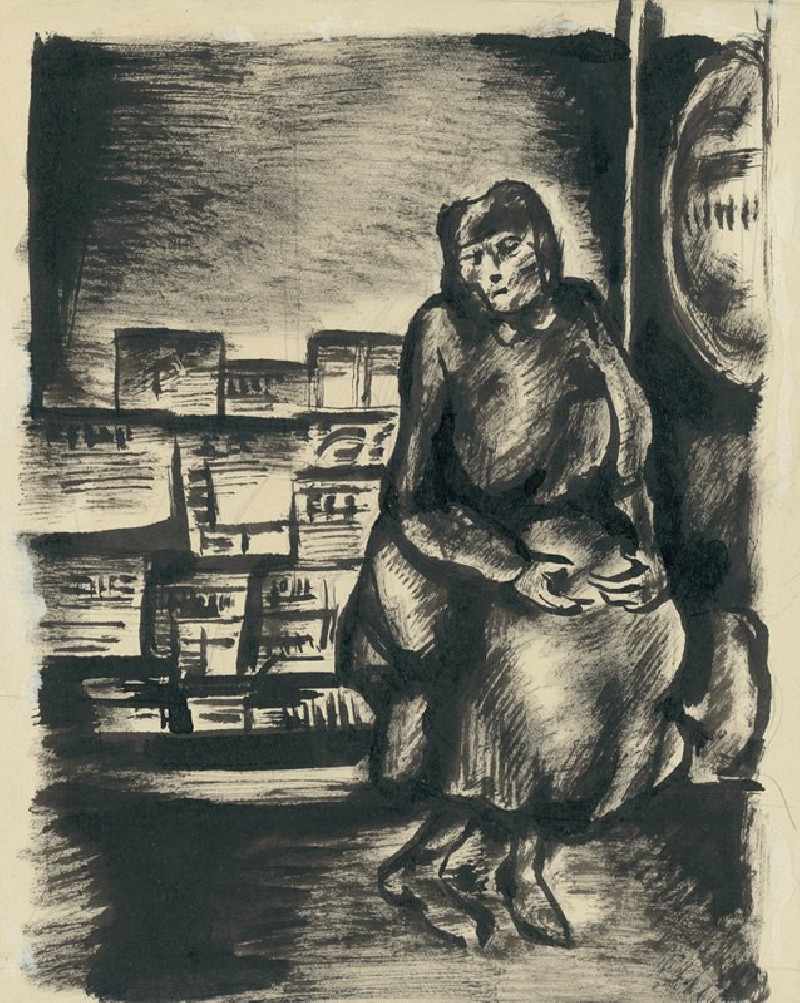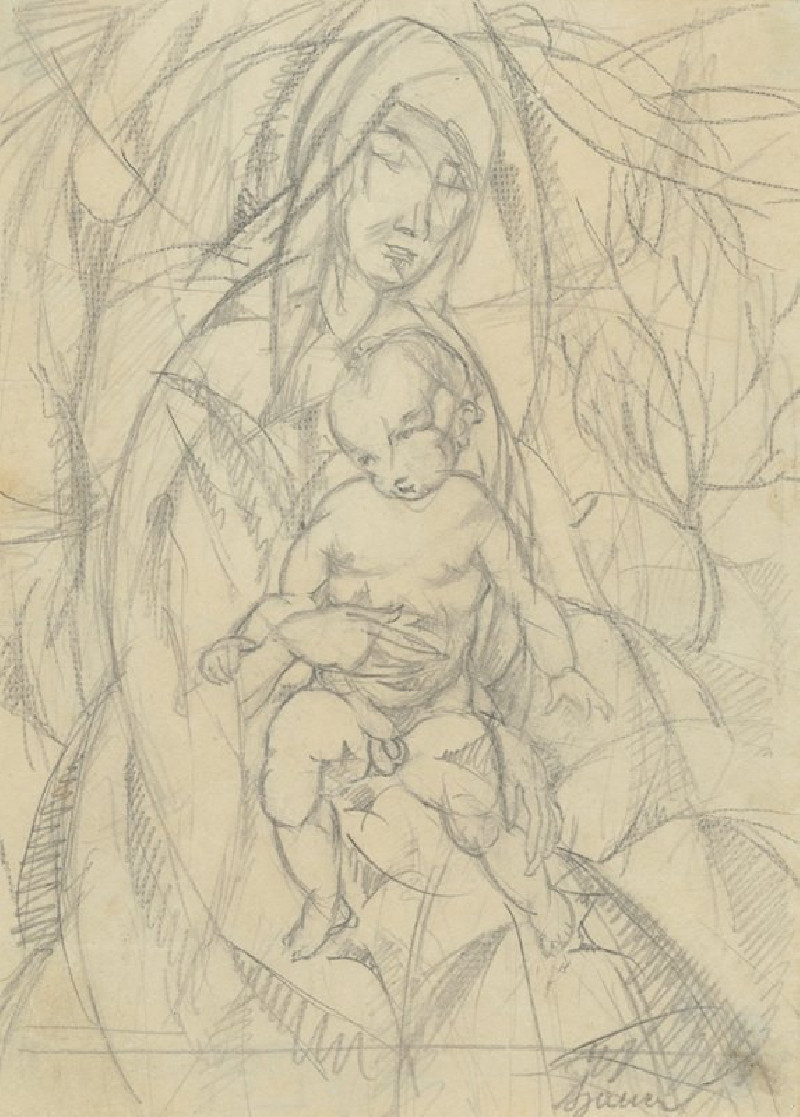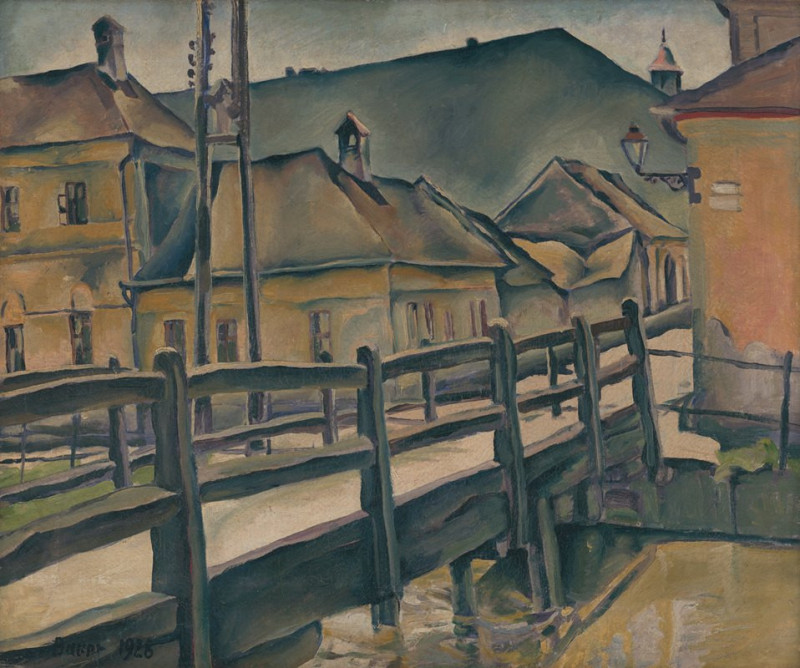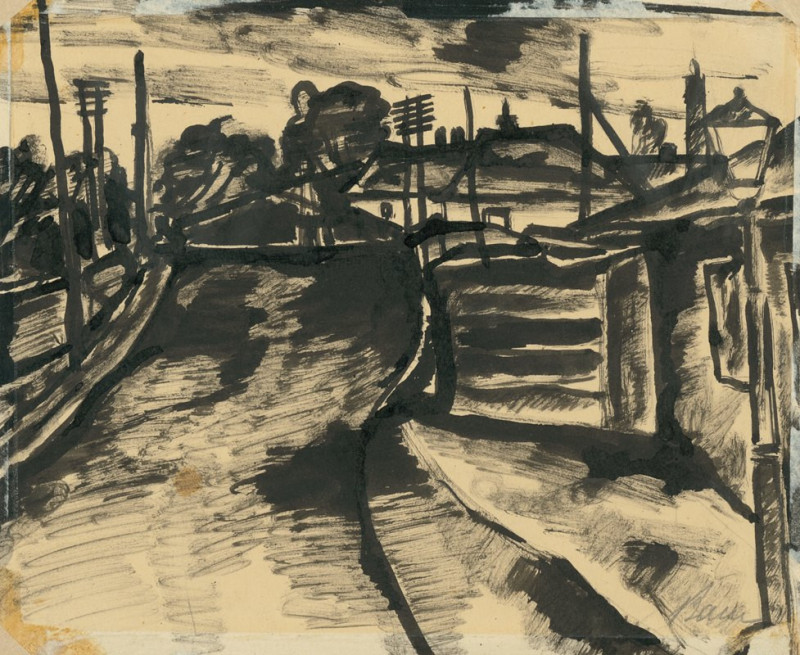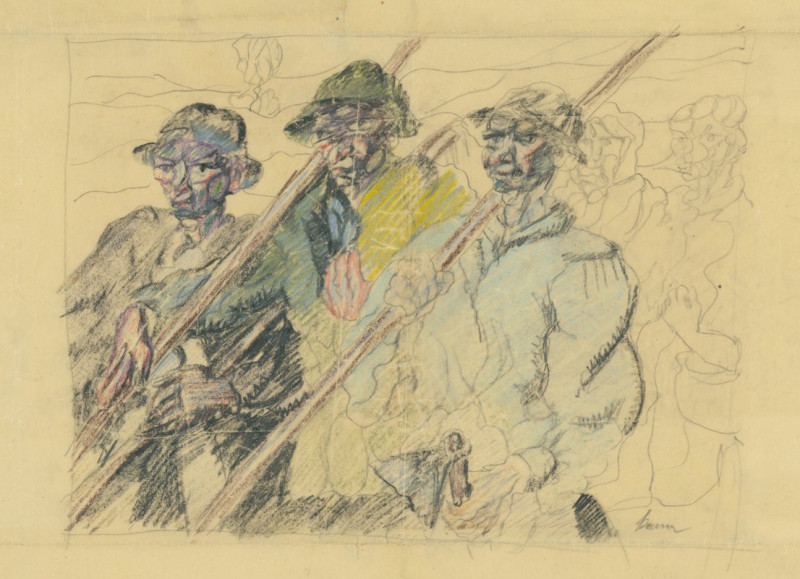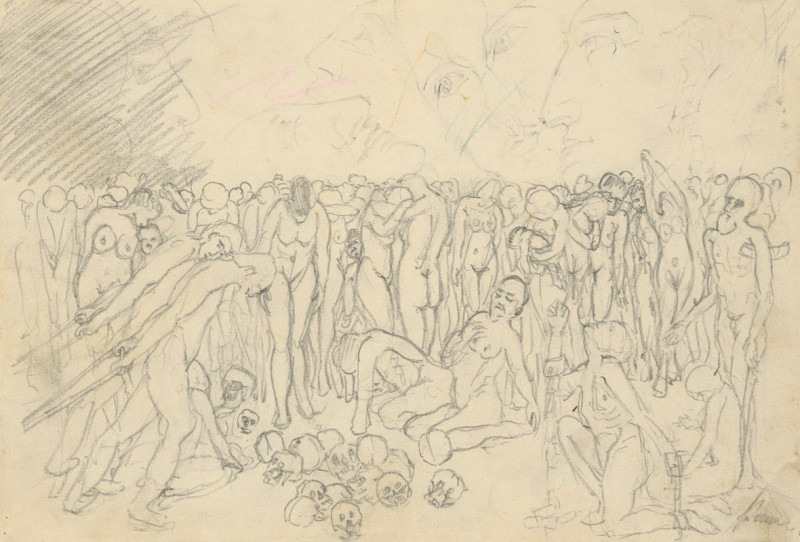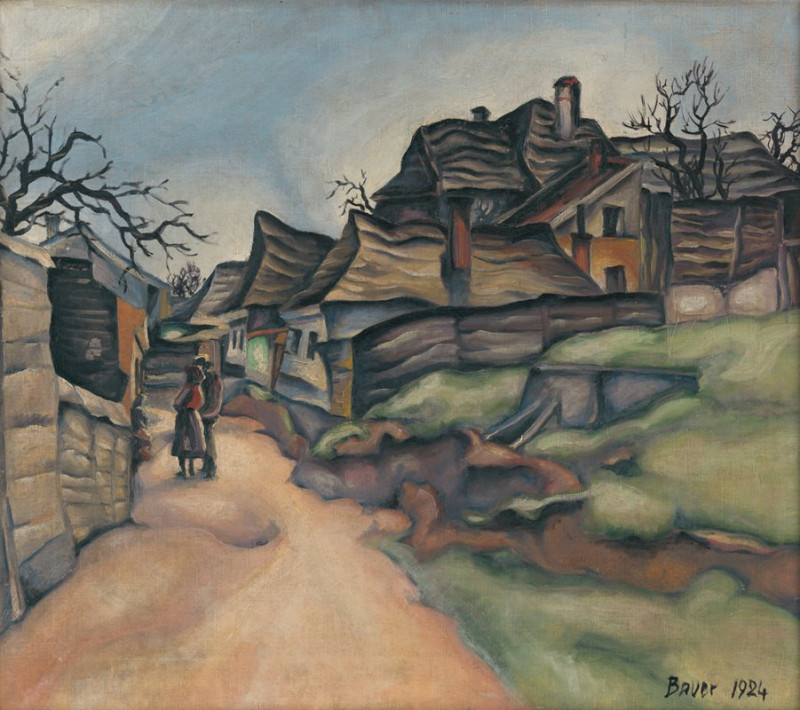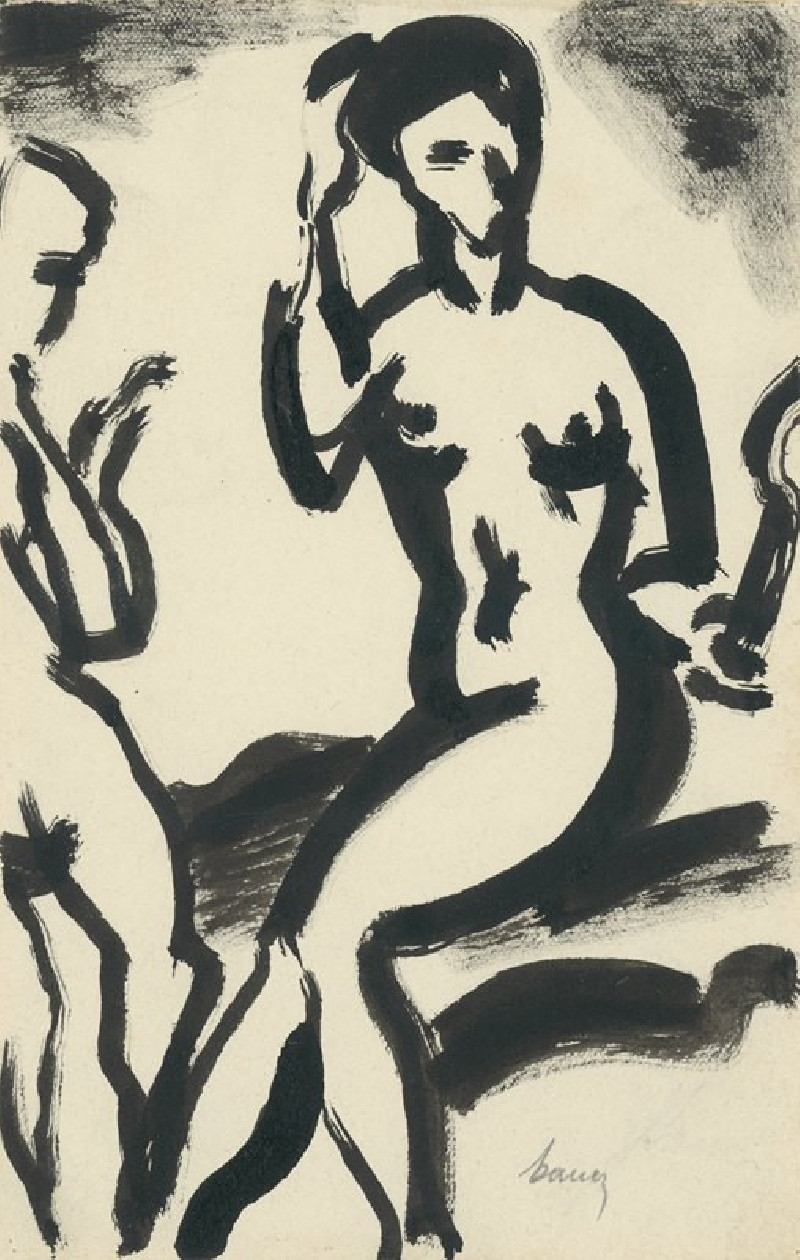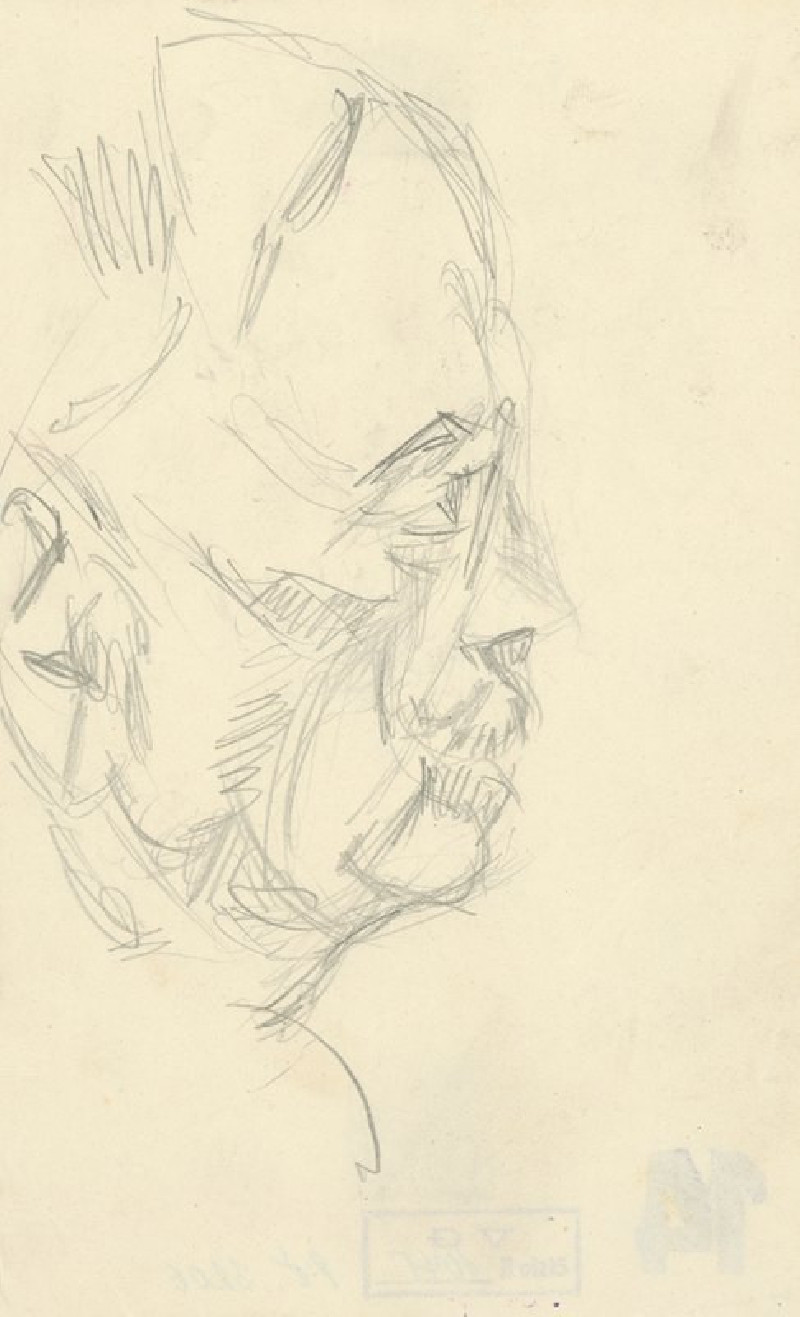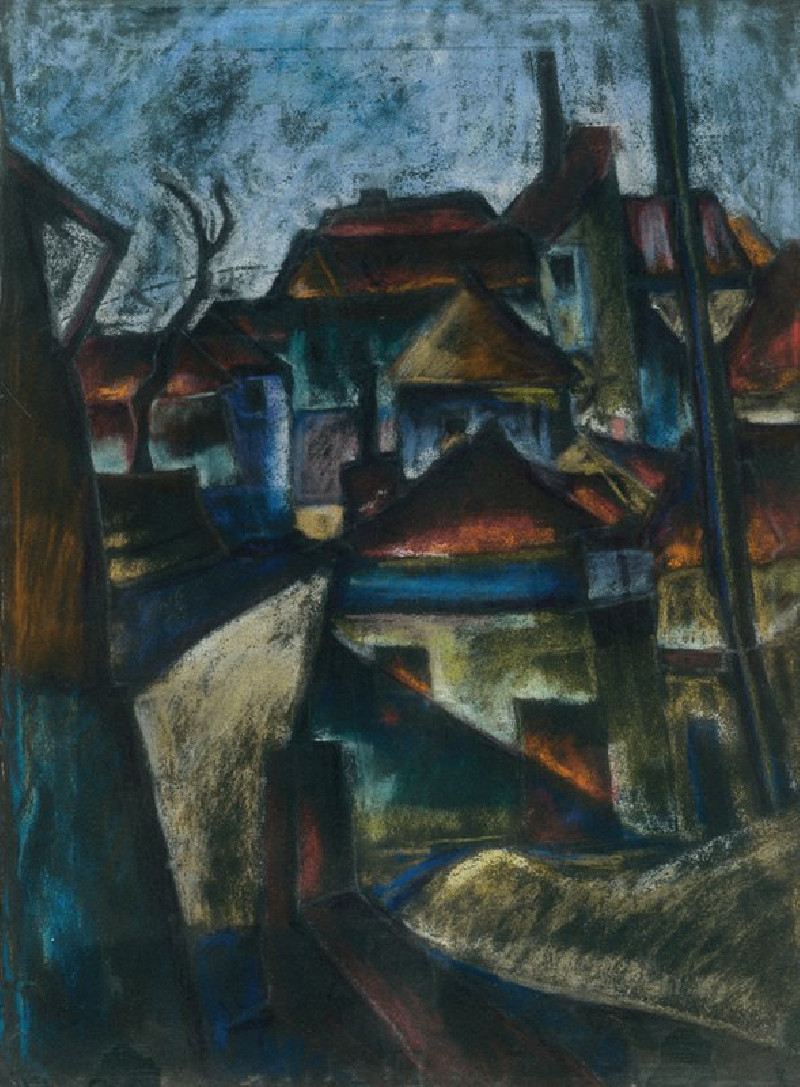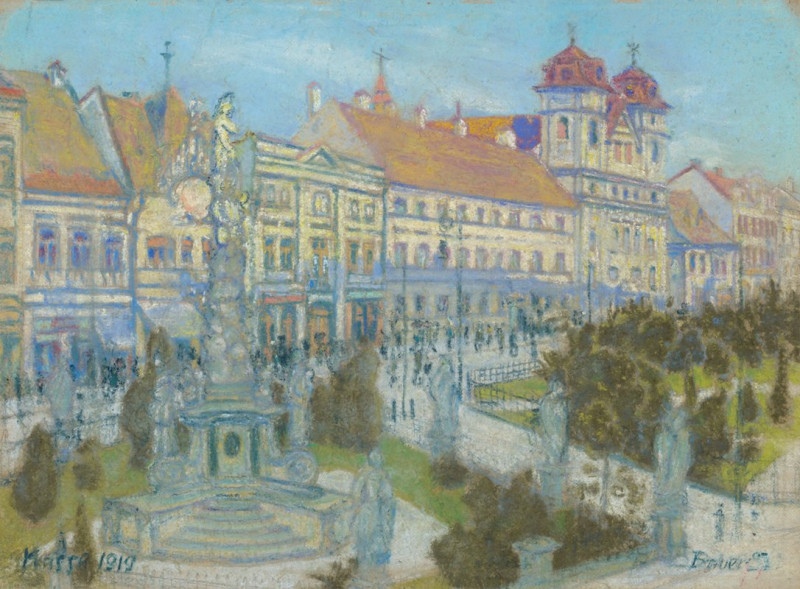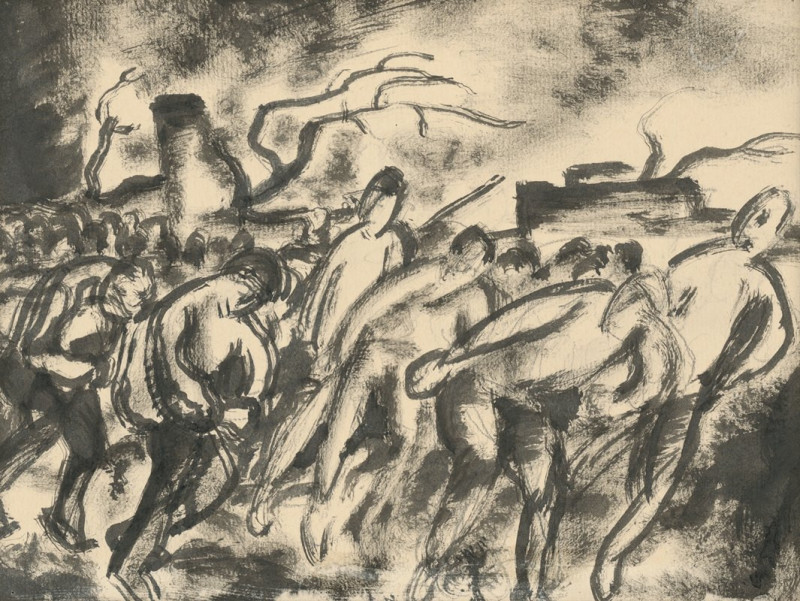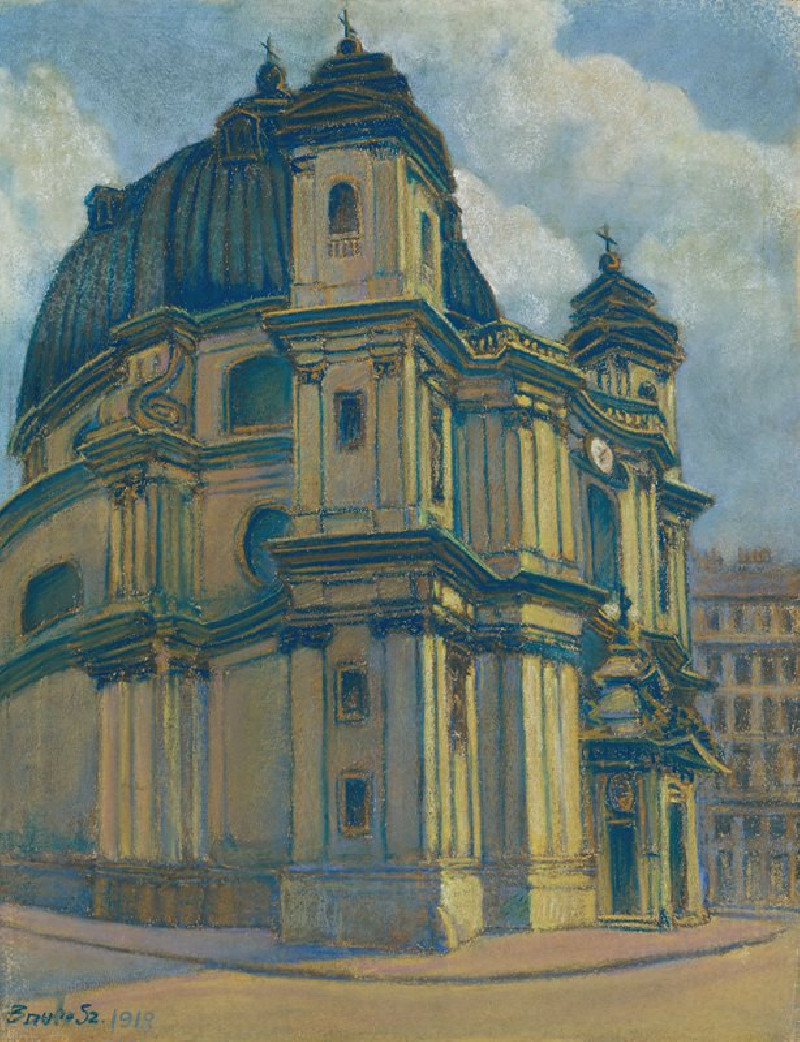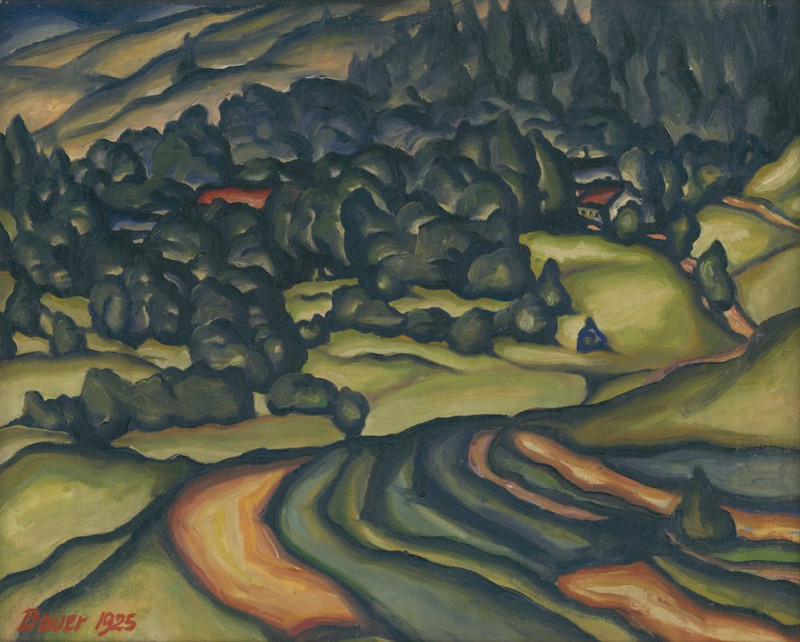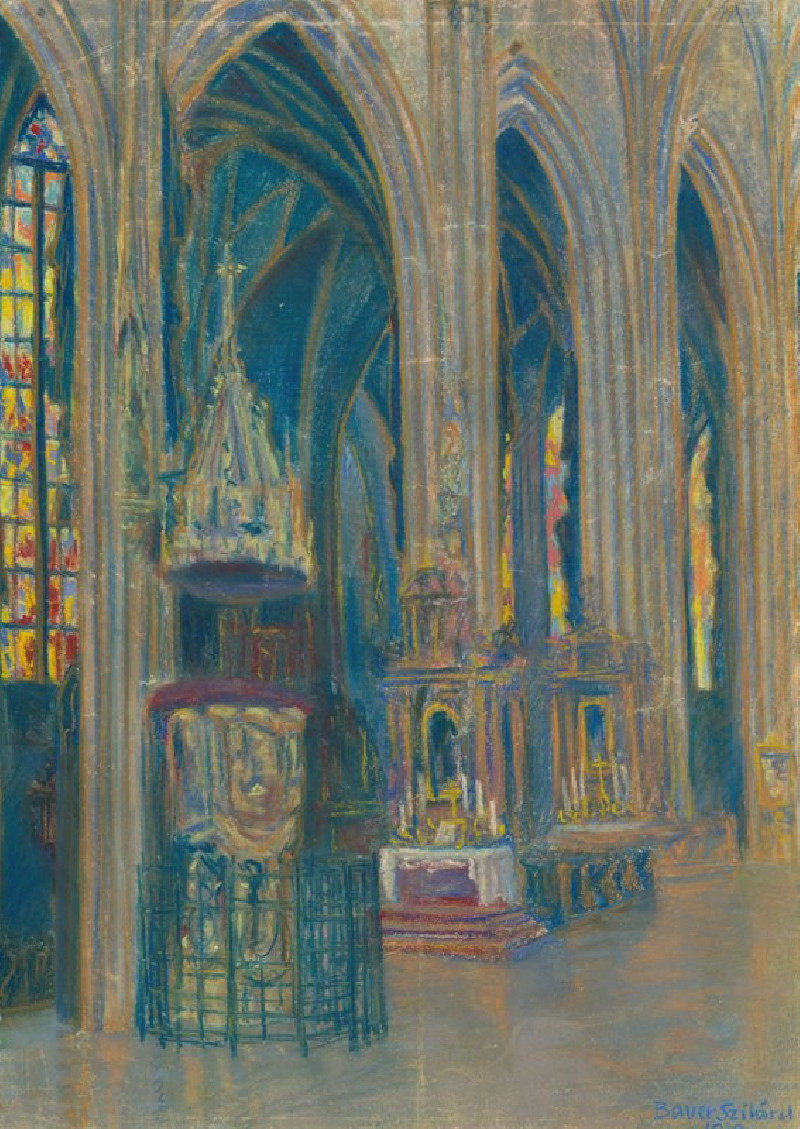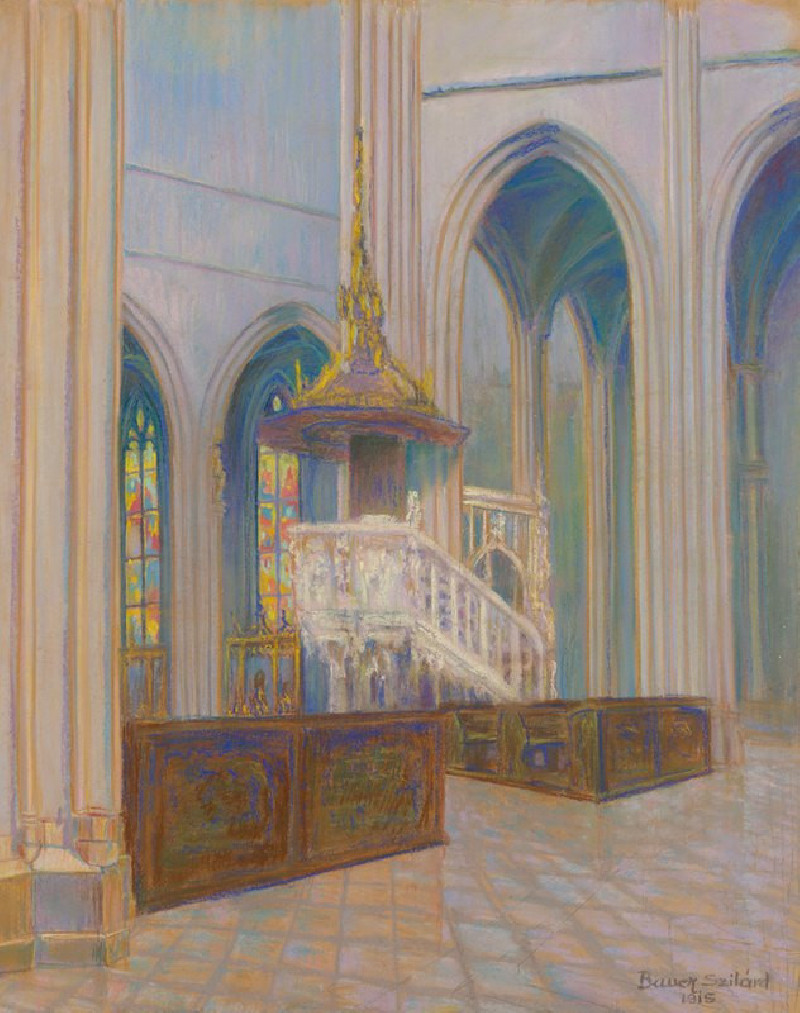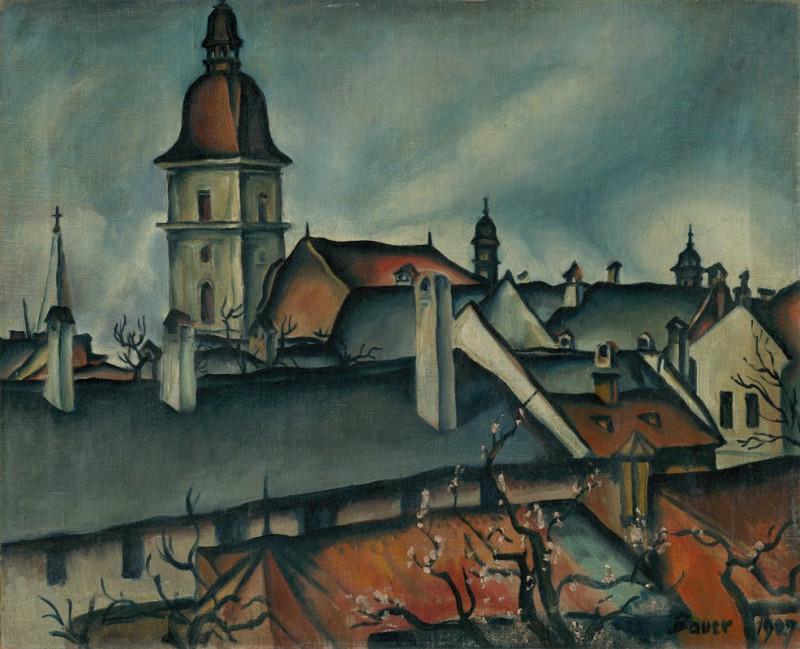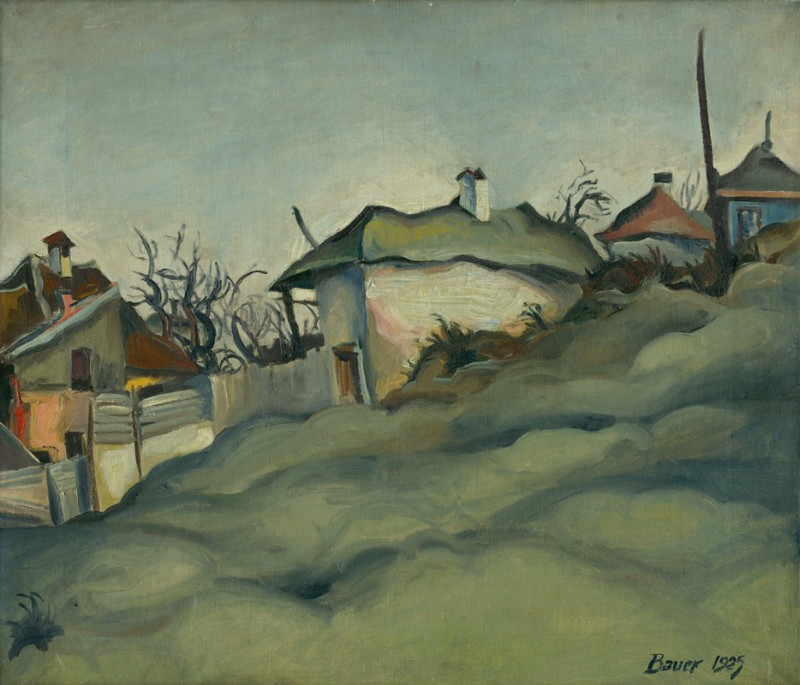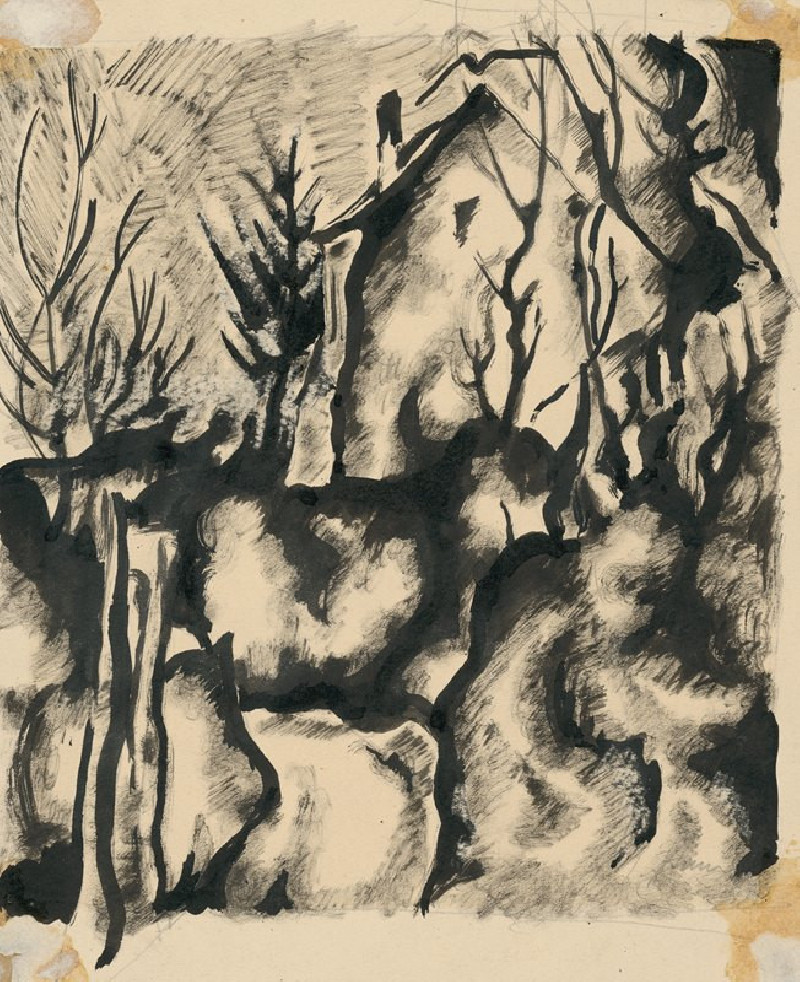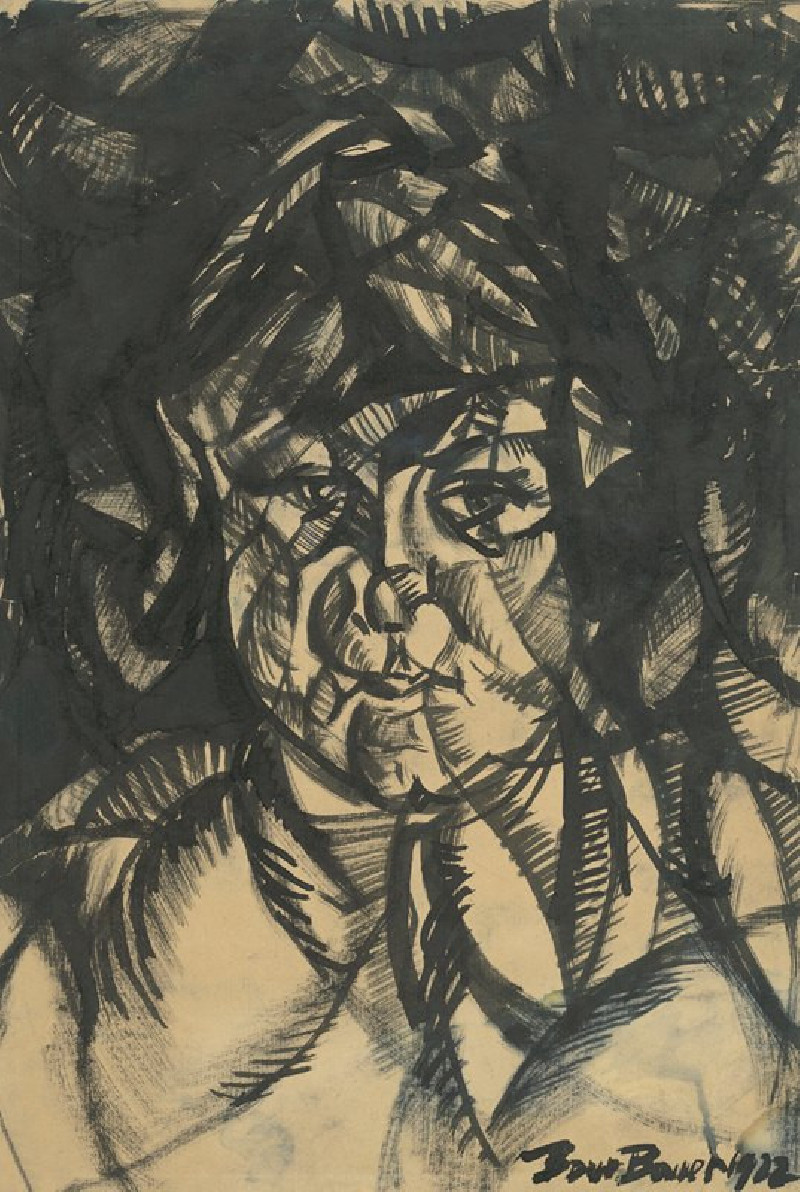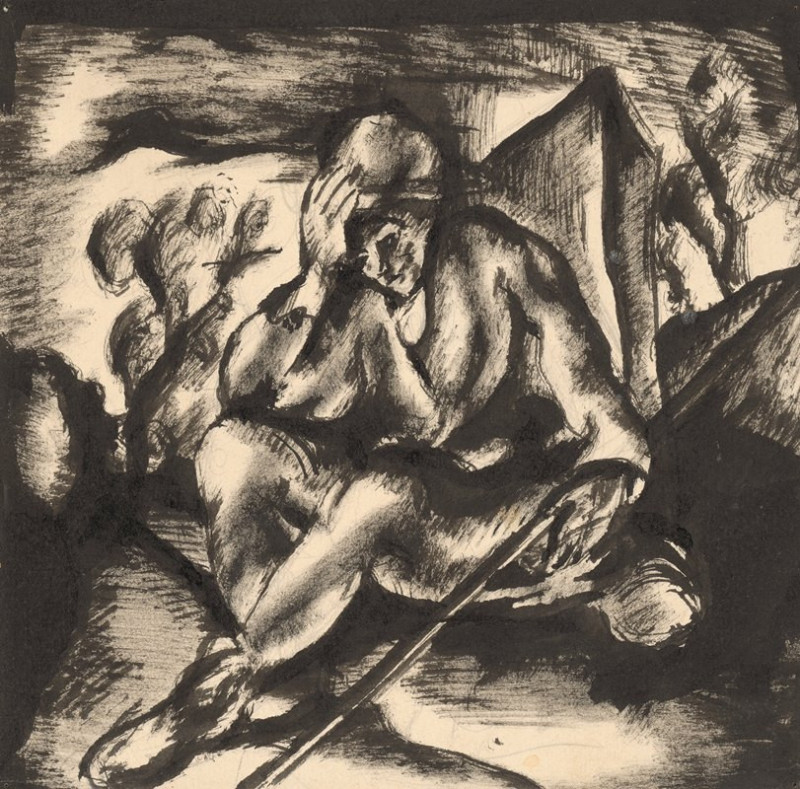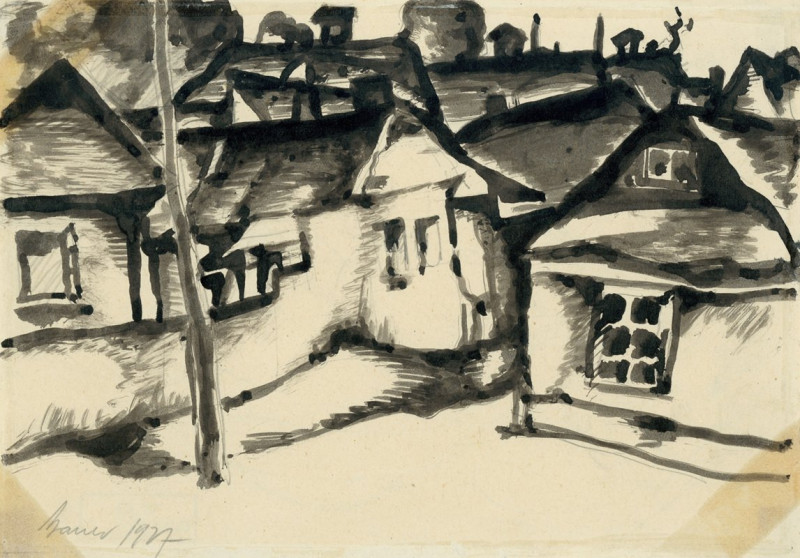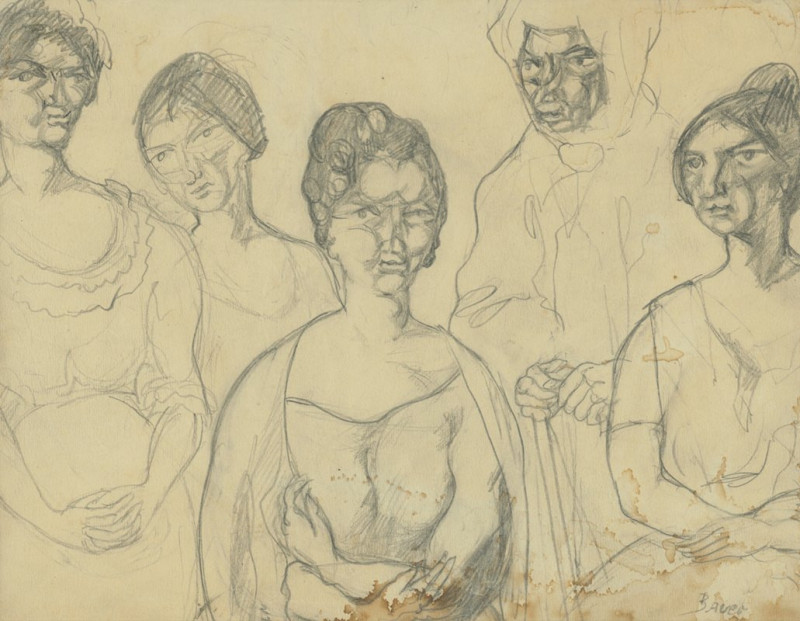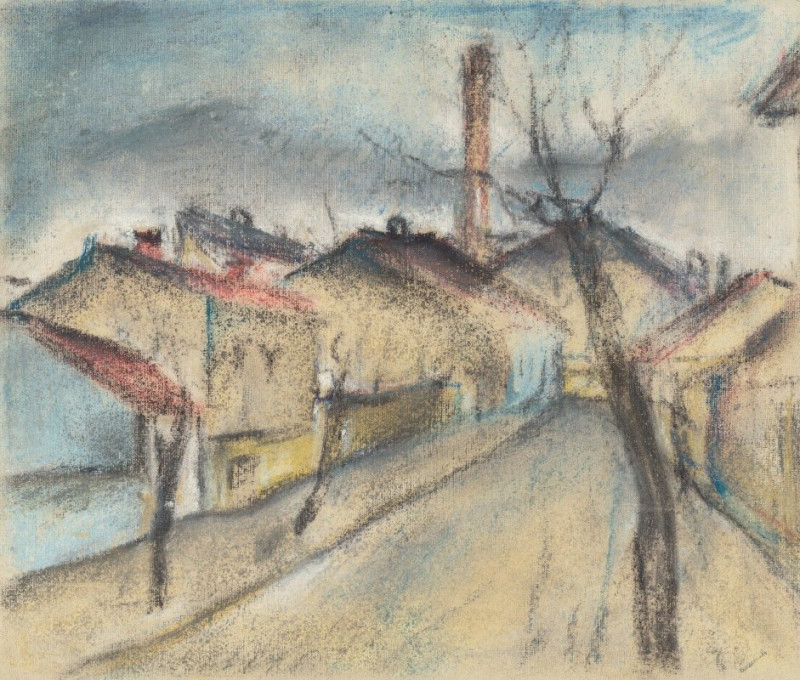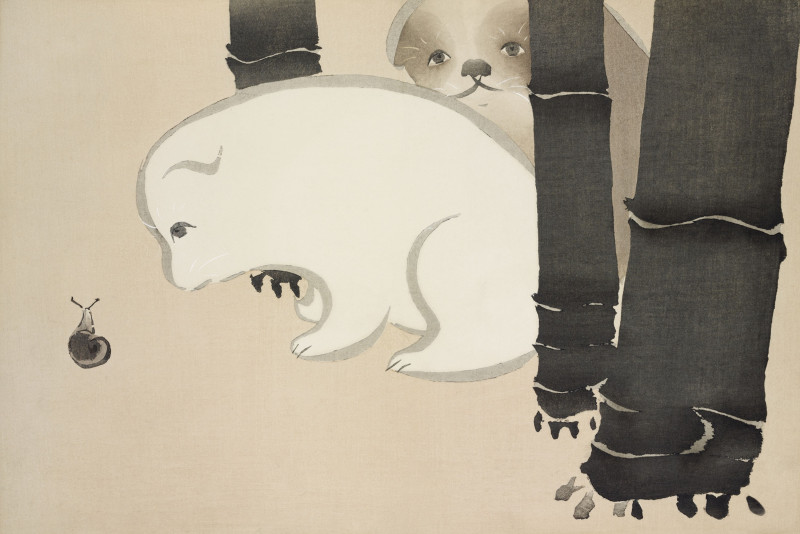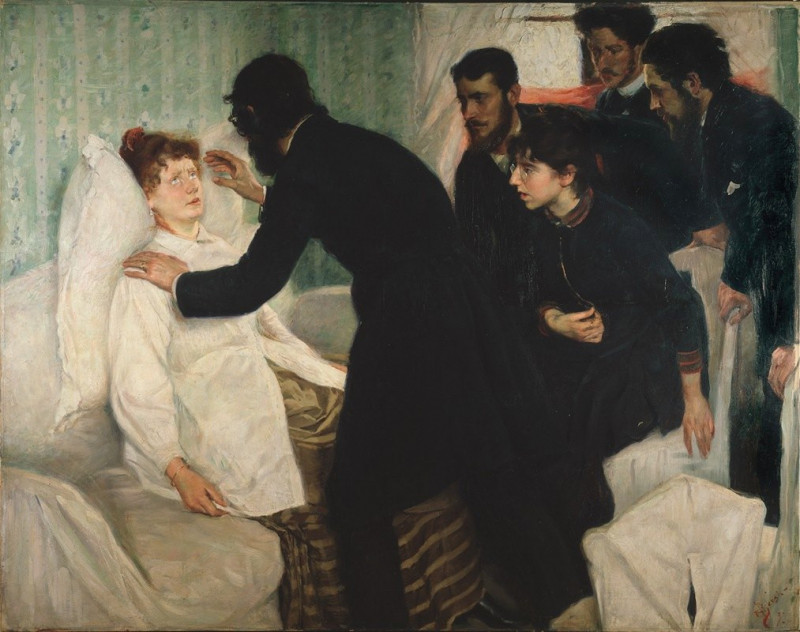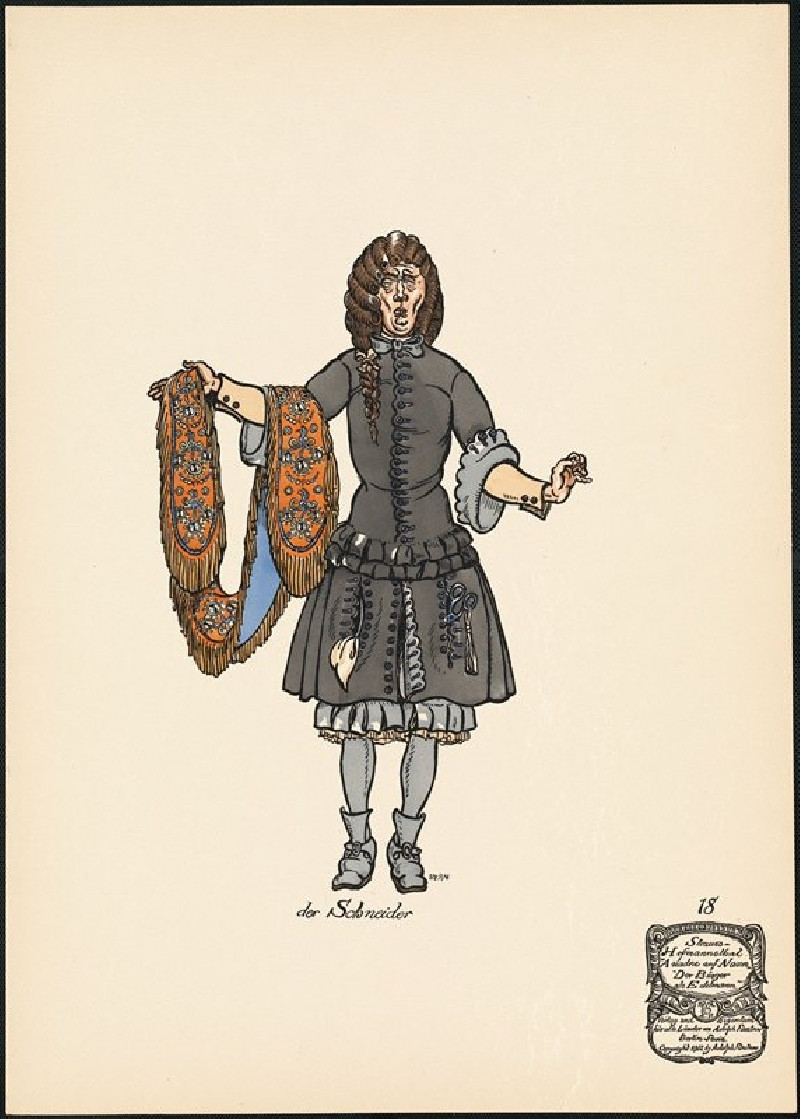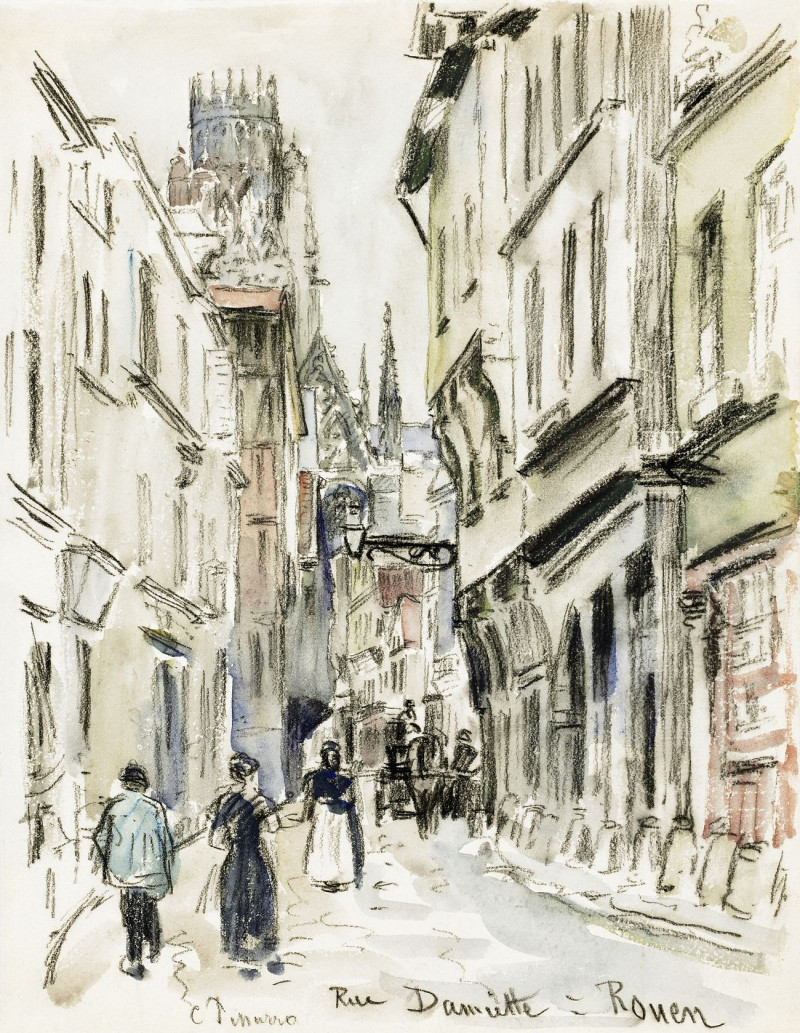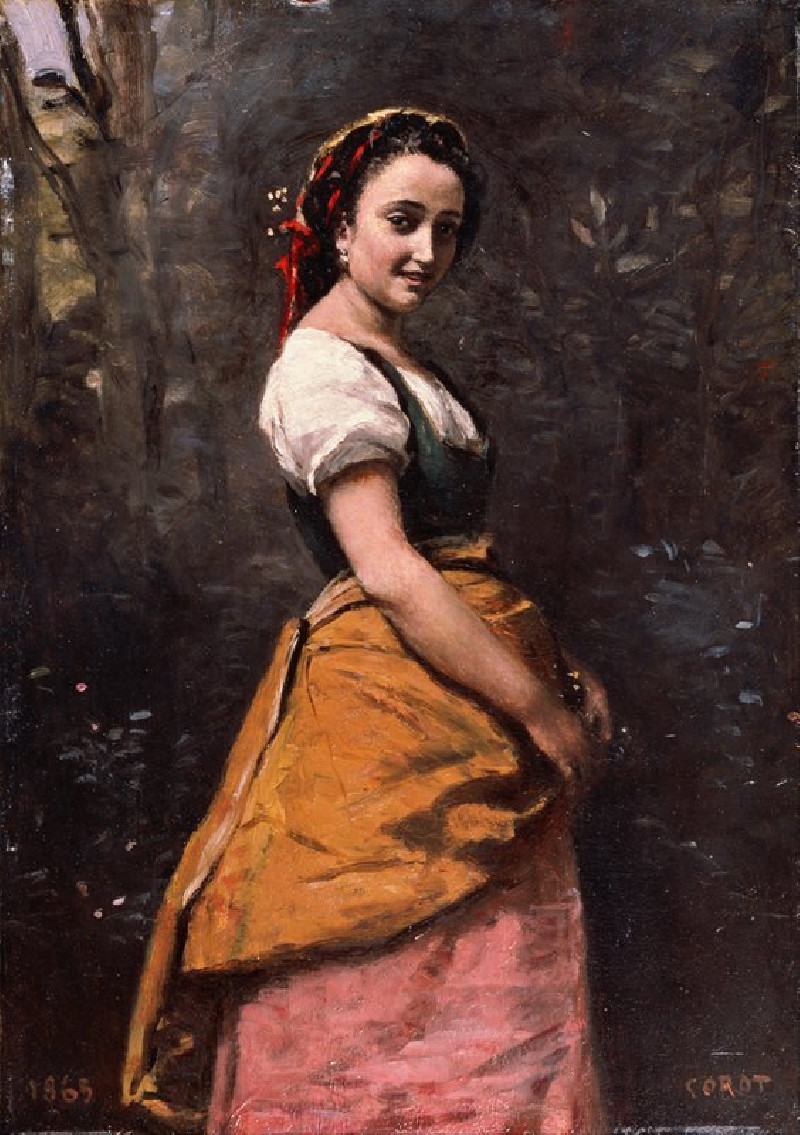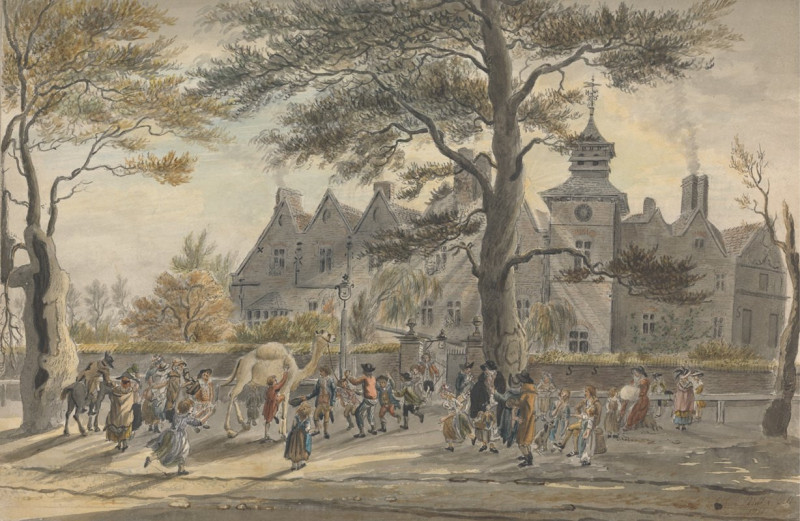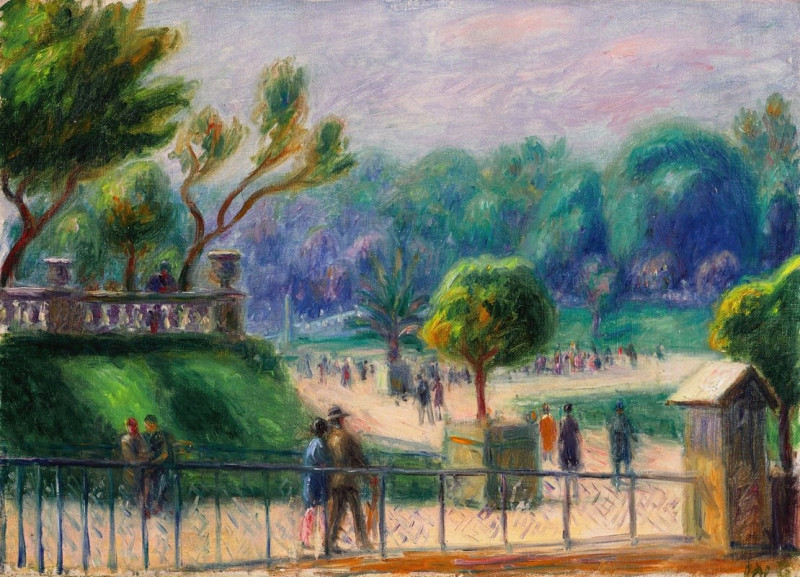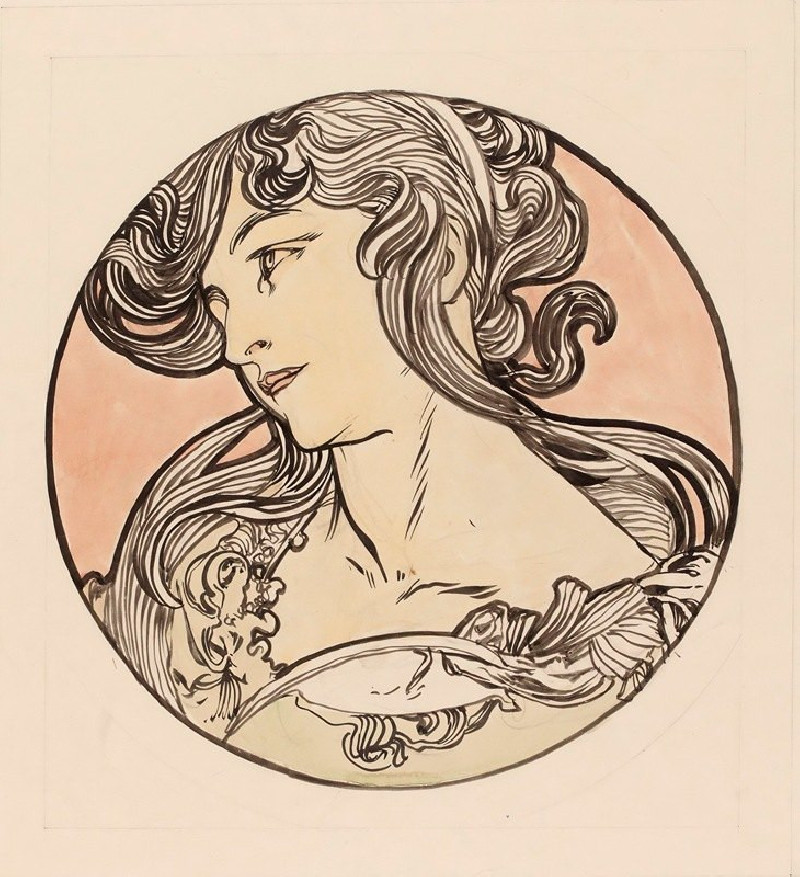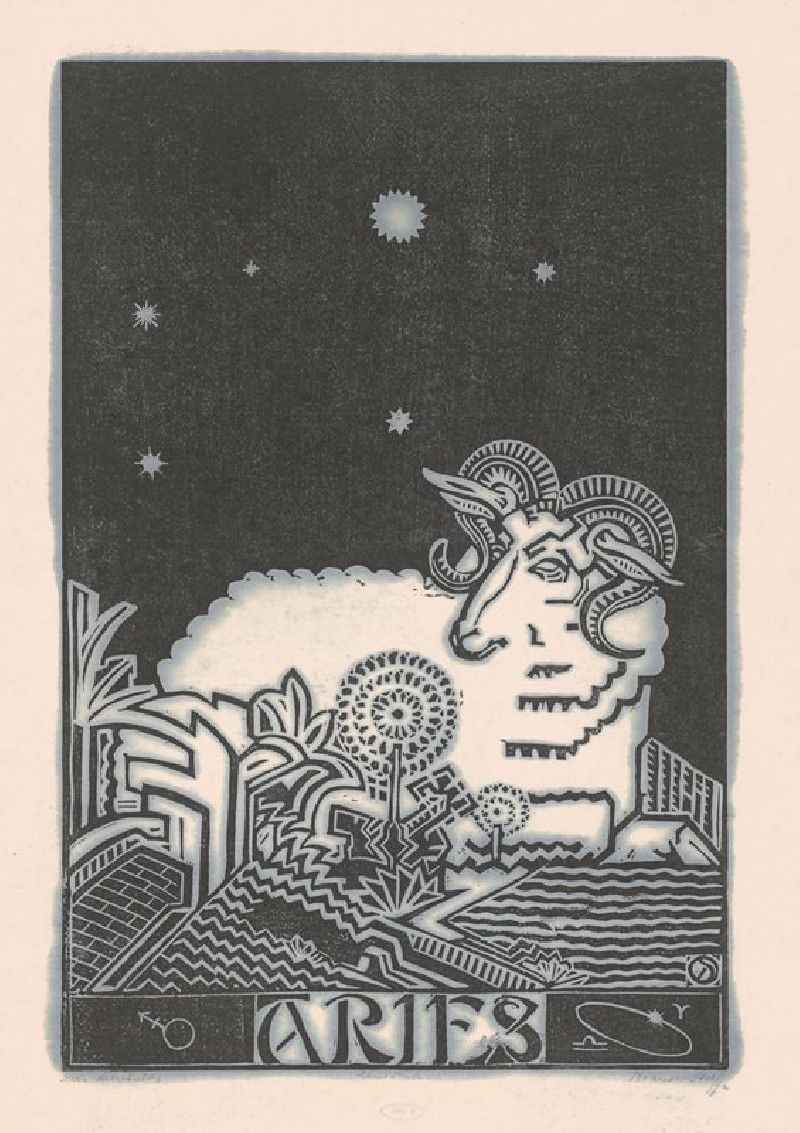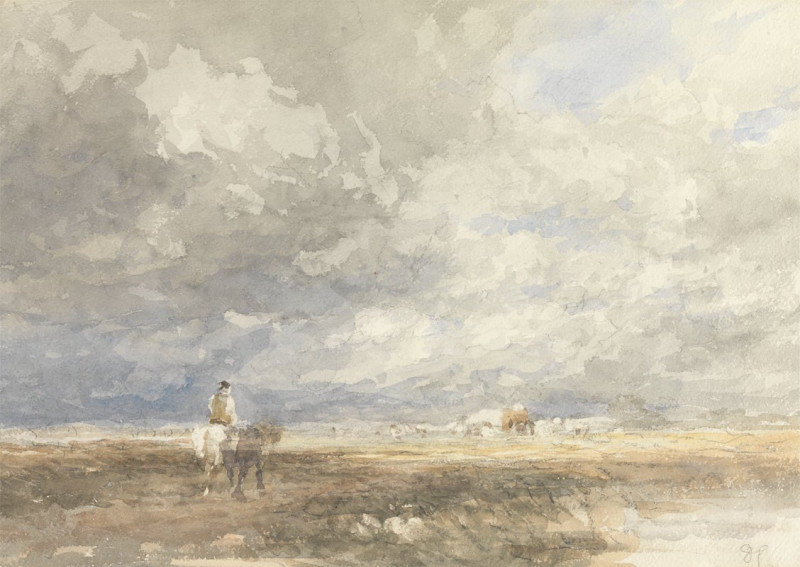Žena na ulici (1924–1927)
Technique: Giclée quality print
Recommended by our customers
More about this artwork
“Žena na ulici” by Konštantín Bauer, created between 1924 and 1927, captures a poignant moment of everyday life with a strikingly expressive style. This monochrome painting depicts a woman seated in what appears to be a public setting, possibly a bench on a bustling street corner. Her posture is slumped, indicating either weariness or deep contemplation, and she clutches her handbag close to her body, suggesting a need for security or comfort in a public space.The background is a blurred array of storefronts or perhaps posters, contributing to the sense of urban anonymity and the brisk movement of city life. The use of stark, heavy lines and the dark tones intensify the emotional impact of the scene, focusing viewers’ attention on the solitary figure amidst the undefined, chaotic backdrop. Bauer's portrayal goes beyond a simple street scene, delving into themes of solitude, vulnerability, and perhaps introspection, offering a window into the inner life of an individual in the urban expanse.
Delivery
Returns
Konštantín Bauer was a Slovak painter.
Konštantín Bauer was born on November 24, 1893 in Slovenská Ľupča. He spent his childhood in Banská Bystrica. At the age of fifteen, he moved with his parents to Košice, where he graduated from high school. After graduating in mechanical engineering in Budapest in 1915, he worked briefly as an engineer in Novo Mesto pod Šiatrom. From 1916 to 1918 he worked as a railway engineer in Transylvania and then as a civilian employee at the Ministry of War in Vienna.

